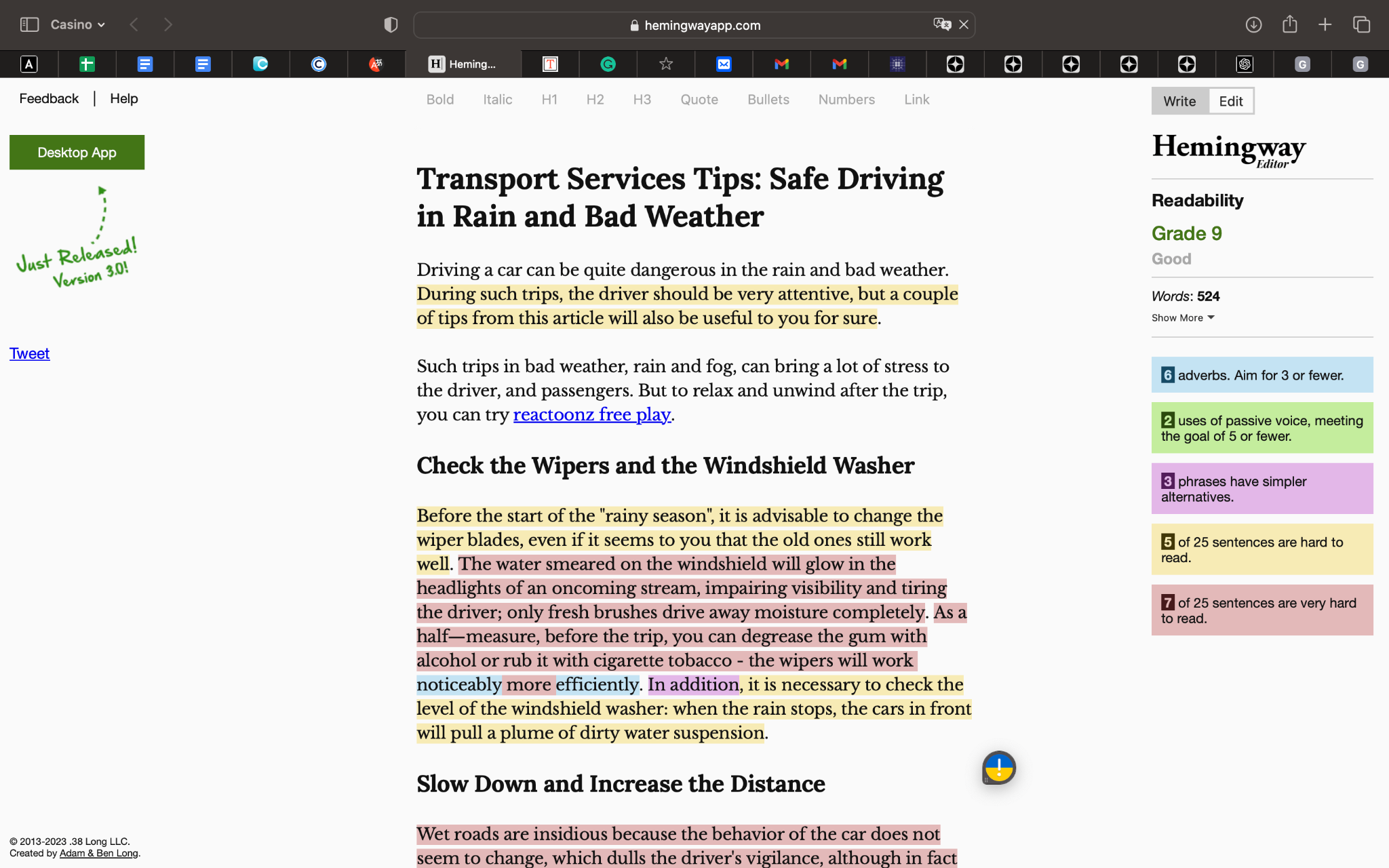Driving a car can be quite dangerous in the rain and bad weather. During such trips, the driver should be very attentive, but a couple of tips from this article will also be useful to you for sure.
Such trips in bad weather, rain, and fog, can bring a lot of stress to the driver, and passengers. But to relax and unwind after the trip, you can try reactoonz free play.
Check the Wipers and the Windshield Washer
Before the start of the “rainy season”, it is advisable to change the wiper blades, even if it seems to you that the old ones still work well. The water smeared on the windshield will glow in the headlights of an oncoming stream, impairing visibility and tiring the driver; only fresh brushes drive away moisture completely. As a half—measure, before the trip, you can decrease the gum with alcohol or rub it with cigarette tobacco – the wipers will work noticeably more efficiently. In addition, it is necessary to check the level of the windshield washer: when the rain stops, the cars in front will pull a plume of dirty water suspension.
Slow Down and Increase the Distance
Wet roads are insidious because the behavior of the car does not seem to change, which dulls the driver’s vigilance, although the adhesion of tires to asphalt is much worse. Especially at the beginning of rain: a soap film of dust and fuels and lubricants forms on the canvas. After some time, it will be washed off the road, but at the first drops, you should lower the speed and increase the distance by one and a half to two times. Avoid sudden maneuvers: skidding on a wet track can result not only in a sharp turn but also in excessive acceleration or throwing the clutch when switching speeds.
Stick to the Middle Row, Avoid the Rut
As a rule, the highway has a slight slope to divert water. Therefore, puddles are always deeper at the edge of the canvas than in the center. The problem with puddles is that you never know what’s at the bottom. In order not to drive the wheel into an open well or a deep pit, it is better to go around them. If this is not possible, slow down to a reasonable minimum: “crashing” into the water at full speed, and you can easily lose the bumper. After leaving the puddle, briefly press the brake pedal several times to dry the discs — otherwise, the effectiveness of the brakes will be reduced.
Avoid moving in a rut filled with water — this increases the risk of aquaplaning: the tread does not have time to squeeze water out from under the car, and the car “pops up” and begins to slide on the water, as if on ice. Remember – the wider the tires, the higher the risk of aquaplaning. If you feel that you are “floating”, do not turn the steering wheel and do not brake sharply: just release the gas pedal and wait for the car to slow down and “sink” again.



